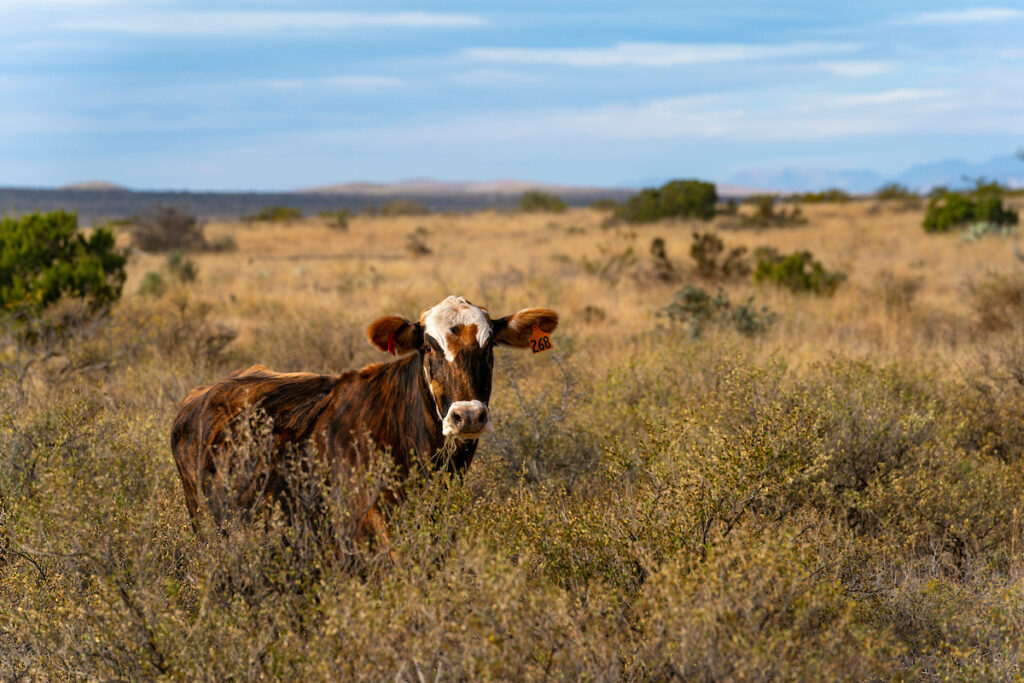USDA funds Texas A&M AgriLife rangeland conservation projects
Four new projects will support producers, conservation programs
Four projects funded by the U.S. Department of Agriculture’s Grazing Lands Conservation Initiative will combine the expertise of Texas A&M AgriLife Research and the Texas A&M AgriLife Extension Service to provide livestock producer support and increase the use of conservation principles on grazing lands.

In total, the 49 nationwide projects selected will receive $12 million in funding through the USDA Natural Resources Conservation Service to expand access to technical assistance for livestock producers and increase the use of conservation practices across the country.
“These projects are a thrilling opportunity to advance the Texas A&M AgriLife Research priorities of sustainable production systems, economic strength and, ultimately, healthy living across Texas and beyond,” said G. Cliff Lamb, Ph.D., director of AgriLife Research. “Further, the diversity of partnerships and geographic impact are a testament to Texas A&M AgriLife’s reputation as a leader in advancing ecological and human wellbeing.”
Researchers within Texas A&M’s College of Agriculture and Life Sciences Department of Rangeland, Wildlife and Fisheries Management will lead the Texas A&M AgriLife proposals selected.
“In selecting projects for cooperative agreements, we looked for partners with knowledge and expertise in working with livestock producers, advancing climate-smart agriculture and supporting underserved producers,” said Terry Cosby, chief of the USDA Natural Resources Conservation Service. “Privately owned grazing lands cover nearly 30% of the national landscape, which means we have a tremendous opportunity to better reach underserved producers while addressing climate change and conserving natural resources through voluntary, private lands conservation.”
Producer-focused endeavors
Research led by Morgan Treadwell, Ph.D., associate professor and AgriLife Extension range specialist, San Angelo, aims to better understand the phytochemical response of resprouting shrub species to prescribed fire.
“This study will focus on common, invasive shrub species that are capable of resprouting following prescribed fire and are frequently the target of land management efforts,” Treadwell said.

By better understanding the chemical responses of these plants, land managers can develop adaptive strategies following prescribed fire to control them.
Past research overseen by Treadwell indicated that concentrations of certain chemicals in redberry juniper are lowered following a prescribed burn and are more palatable to livestock.
“In terms of management, this provides a window of time for ranchers to browse goats,” said Deann Burson, a rangeland, wildlife and fisheries management doctoral student working under Treadwell. “The goats will select the new foliage, which helps ranchers manage the plant.”
In addition to this applied research, Treadwell and partners will also develop a toxic plant app to assist beginning farmers and ranchers in identifying and managing potentially dangerous plants within specific ecoregions of Texas.
A project under the direction of Doug Tolleson, Ph.D., associate professor and AgriLife Research rangeland scientist, Sonora, will employ non-invasive grazing animal nutritional monitoring methods. AgriLife Research and AgriLife Extension efforts will be integrated via peer-to-peer workshops developed with the explicit goal of introducing historically underserved producer groups to more advanced and validated techniques.
“These workshops will provide high-impact, experiential learning opportunities for producers and Natural Resource Conservation Service personnel through grazing animal performance demonstrations using technology housed in the Texas A&M AgriLife Center for Natural Resource Information Technology,” Tolleson said.
Advancing range management in Texas and beyond
The Texas A&M Center for Grazinglands and Ranch Management and the Center for Natural Resource Information Technology will be involved with both Treadwell and Tolleson’s projects as well as two additional grants managed by the Texas Grazing Land Coalition and the Hawaii Rangeland Stewardship Foundation.
“Our involvement with these diverse projects reflects our mission to safeguard the ecologic and economic diversity of our nation’s grazing lands and ranching operations,” said Jeff Goodwin, Ph.D., research assistant professor and director of the Center for Grazinglands and Ranch Management, College Station.
In partnership with the Texas Grazing Land Coalition, the Texas A&M centers will deliver technical assistance to landowners through web and field-based delivery formats. The programming will focus on best practices to address a variety of management concerns, including soil health and resiliency. Supplemental field training and mentorship opportunities will be provided to landowners across South, Central and North Texas throughout the grant period and beyond.
Bill Fox, Ph.D., director of the Center for Natural Resource Information Technology, College Station, said these efforts are especially critical as Texas’ population continues to expand, placing growing pressure on the state’s grazing land resources.
Across the Pacific Ocean, the Hawaii Rangeland Stewardship Foundation will build capacity within the Hawaii Grazing Lands Coalition to provide technical assistance for ranchers through educational workshops and in-person support. Special emphasis will be placed on reaching historically underserved producers in Hawaii.
Goodwin said the specializations offered by the Texas A&M centers will enable the quantification of soil health metrics as well as plant diversity assessments across participating ranches. In turn, this critical information will guide education and outreach efforts across the archipelago.




